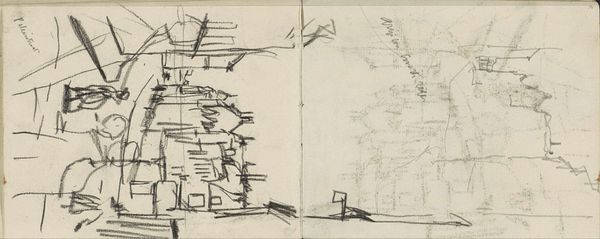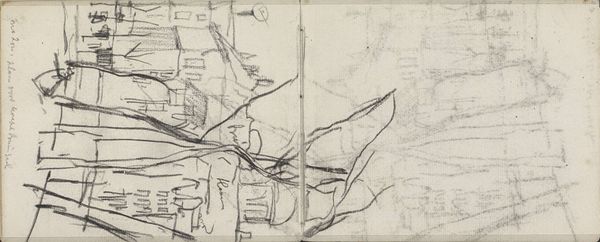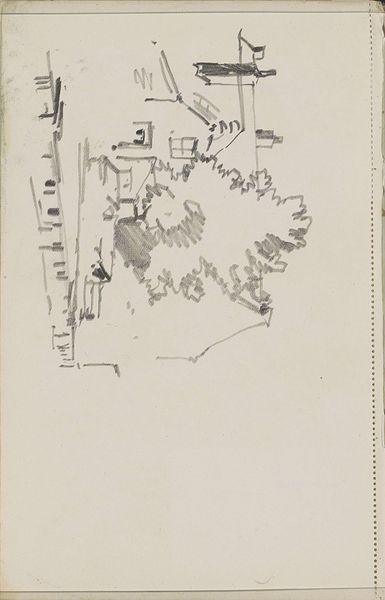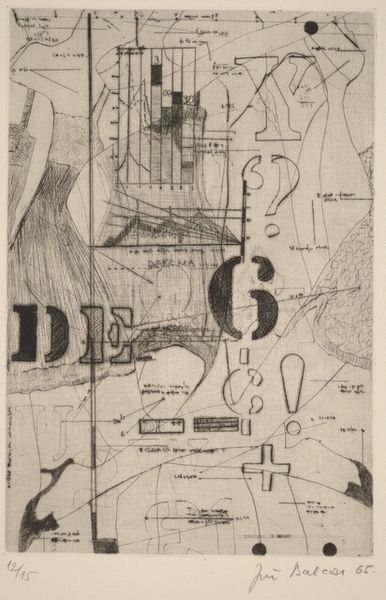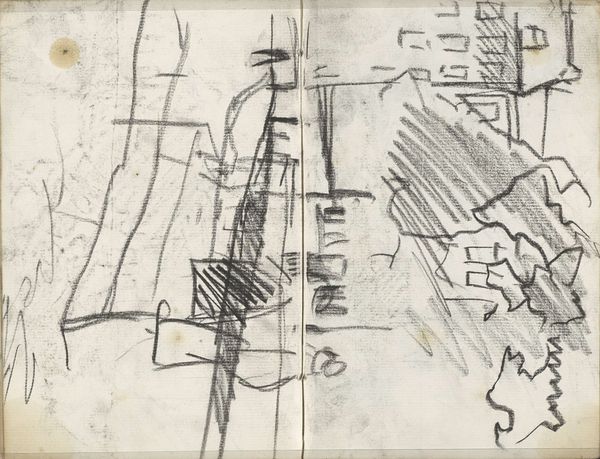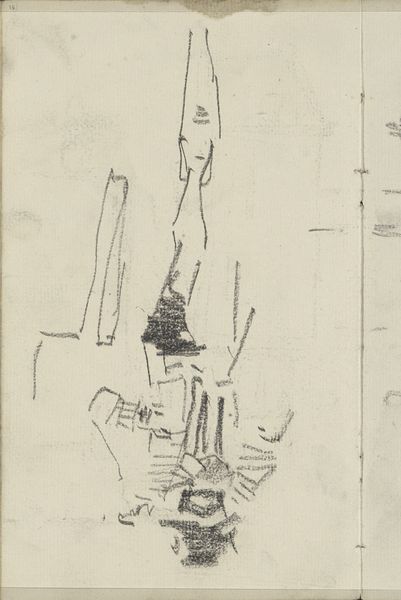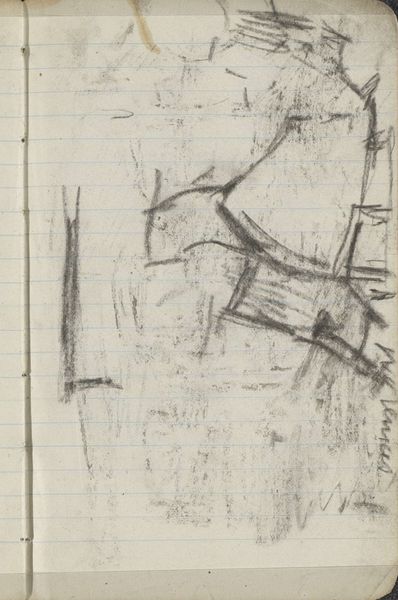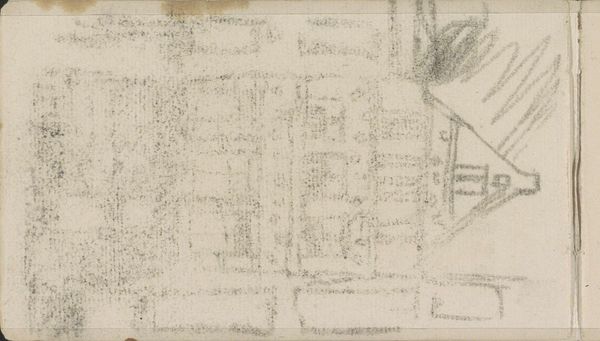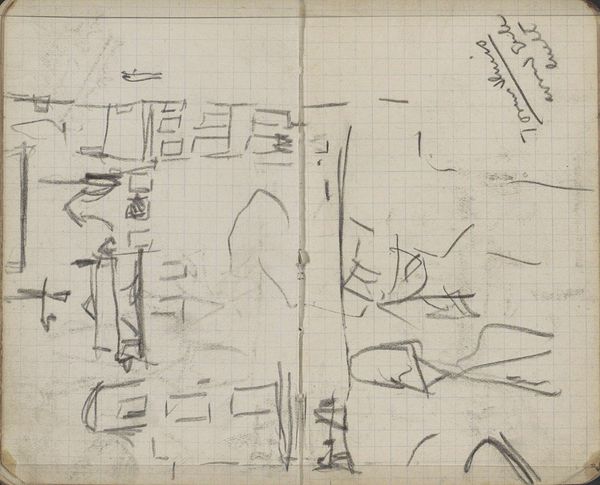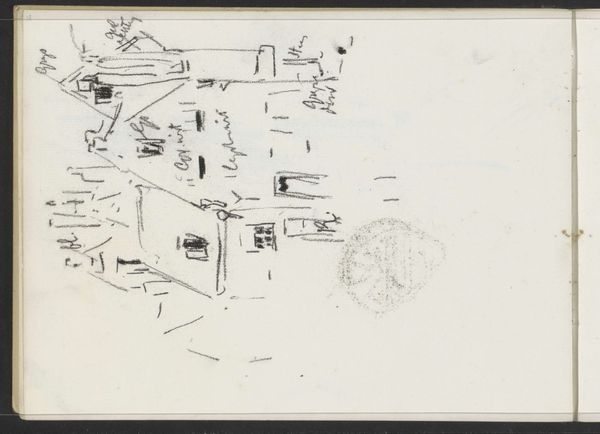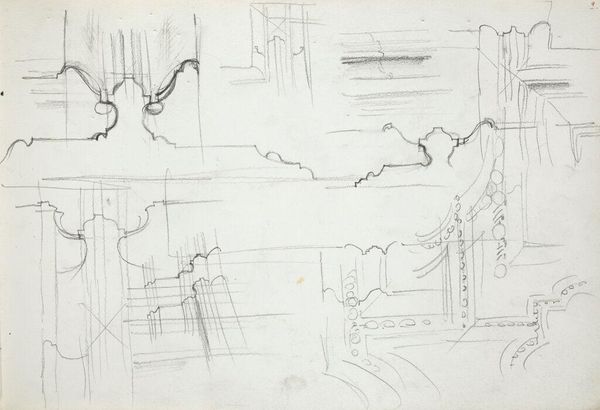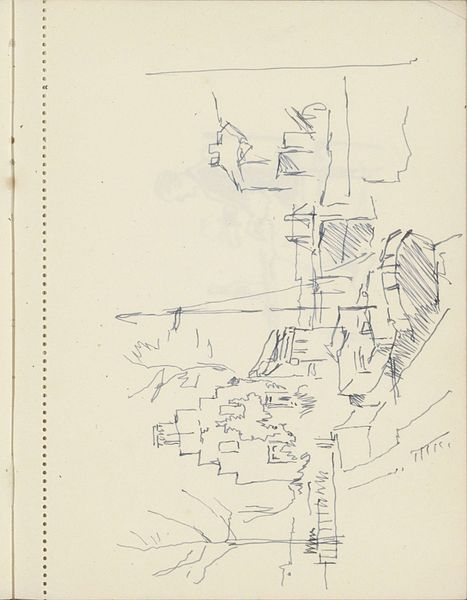
#
pen sketch
#
hand drawn type
#
hand lettering
#
personal sketchbook
#
sketchwork
#
pen-ink sketch
#
pen work
#
sketchbook drawing
#
sketchbook art
#
street
#
initial sketch
Copyright: Rijks Museum: Open Domain
Curator: So, here we have George Hendrik Breitner’s "Huizen in de Paleisstraat te Amsterdam," likely from sometime between 1886 and 1903. It’s currently held here at the Rijksmuseum. My first impression? It’s moody—in a beautifully haunting way, of course. What do you see? Editor: Immediately, I am struck by the lack of color—the shades and shadows. It’s clearly a work still in its process, and yet its immediacy brings a sense of longing. Did Breitner consciously choose to restrict his pallet for such a scene, to create a raw atmosphere? Curator: Precisely. It's more than just an initial sketch; it’s an emotional notation. These quick pen strokes capture the essence of a fleeting moment, like glimpsing a memory through fogged glass. It reminds me of Amsterdam on a cold winter morning; I like the lack of pretense; this sketch lays the groundwork and exposes the bones of something great. Editor: I like that! It’s certainly rough, but for me it speaks to the power of architectural structures as symbols of permanence and continuity. The windows and their rhythmic, if haphazard, arrangement evoke an anthropomorphic element. It is as if they are staring at you and me. Curator: They are watching… Maybe that’s why I find the muted right-hand side of the double-page drawing more interesting. It allows the left side to breathe. Do you suppose it was intentional, to create negative space? Or was Breitner being… economical? Editor: The bare right panel almost seems unfinished at first glance, but perhaps it speaks more broadly to absence, of something lacking that you’re left to ponder, just a bit outside of our understanding of what we expect a finished piece to look like, like cultural memory—fragmentary. A space to wander in, like that Amsterdam street. Curator: You are right, the openness allows us to wander, it gives the scene so much air. As if the streets could lead to anywhere, and no amount of history could quite bind their possibility. Editor: Exactly! It evokes our modern-day experience of street scenes. It is indeed, both grounded and dreamlike. I like seeing sketches that challenge our expectations of a fully formed scene, that makes a statement. Curator: Well, it certainly sparked a beautiful conversation between you and me, hopefully it does the same for the audience. Editor: Yes, these sketches, however brief, let the audience ponder on something in their cultural memory!
Comments
No comments
Be the first to comment and join the conversation on the ultimate creative platform.
